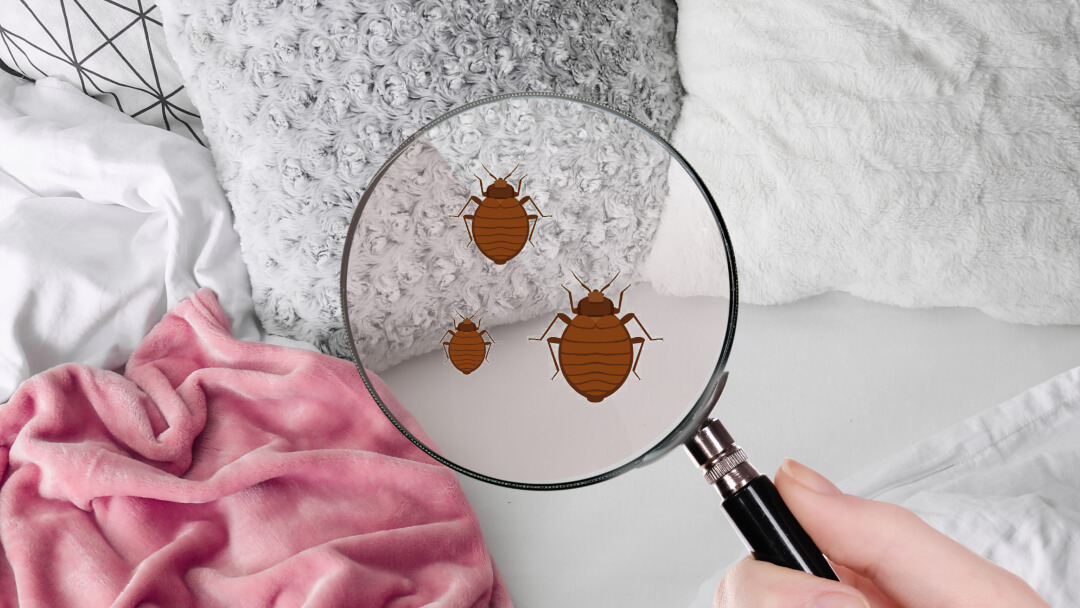The Science of Pest Control: Recognizing the Biology of Common Home Vermin
In the world of parasite control, a profound understanding of the biological ins and outs of typical family pests functions as the cornerstone of reliable monitoring methods. By delving right into the nuanced life process, actions patterns, and recreation techniques of these undesirable intruders, we reveal a riches of knowledge that can dramatically influence our ability to regulate their populations. From the meticulous routines of tiny bugs to the complicated breeding rituals of larger bugs, the insights obtained from examining their biology give a crucial foundation for developing targeted and lasting solutions. Join us as we untangle the clinical foundations of insect control and explore the fascinating world that exists within our homes (exterminator philadelphia bed bugs philly).
Importance of Pest Biology
The understanding of pest biology is essential for effective parasite control techniques in property setups. By diving right into the biology of usual house insects, people can get beneficial understandings right into their habits, life cycles, and environments. This expertise is necessary for establishing targeted and lasting bug monitoring approaches that lessen using unsafe chemicals and minimize ecological impact.
Pest biology includes various elements that affect bug infestations, including reproductive prices, liked food sources, and survival mechanisms. For example, understanding the reproducing patterns of parasites such as mosquitoes or roaches can aid home owners implement preventive measures to disrupt their life cycles and decrease populaces. Recognizing the foraging habits of rats or ants can aid in finding and eliminating their gain access to points to food sources within a family.

Life Cycles of Typical Pests
Recognizing the life cycles of common bugs is important for applying efficient parasite control measures in household atmospheres. The life cycle of a pest describes the stages it undergoes from birth to the adult years and consists of egg, larva, pupa, and grown-up phases. Knowing these stages helps in recognizing the most susceptible points in the parasite's life process for targeted control strategies.
As an example, typical home pests like roaches have an incomplete transformation, proceeding from egg to fairy to adult. Understanding this cycle can assist in targeting egg-laying websites, disrupting recreation, and avoiding the appearance of new grownups. In contrast, pests like insects undergo a complete transformation with egg, larva, pupa, and adult phases. By concentrating on removing reproducing sites such as standing water, it is possible to interrupt the life cycle and minimize mosquito populations properly.
Habits Patterns of Family Insects
A thorough analysis of house insects reveals intricate habits patterns that play a critical function in understanding bug control techniques. Home pests display numerous habits patterns that add to their survival and capability to prosper in human environments. Recognizing these patterns is essential for effective insect management.
One common habits among home pests is their destination to food sources. Insects such as ants, cockroaches, and kitchen bugs are attracted to food spills, crumbs, and residues. By recognizing and removing these food resources, property owners can disrupt the bugs' foraging patterns and minimize invasions.

Moreover, several family bugs show social actions, residing in colonies or teams. Understanding the social dynamics of insects like ants or termites is essential for successfully eradicating whole nests rather than simply individual pests. By comprehending the habits patterns of family pests, pest control professionals can create targeted and reliable mouse trap methods to manage infestations effectively.
Recreation Methods in Insects
Recreation in parasites includes intricate biological mechanisms that drive populace development and invasion rates. Bugs have actually evolved various methods to ensure the continuation of their varieties and the effective emigration of brand-new environments. One typical technique is rapid reproduction, where bugs have brief gestation periods and produce multitudes of spawn. This strategy enables them to rapidly establish thriving populaces in desirable problems. In addition, some pests display complex mating behaviors, such as scent interaction and courtship rituals, to guarantee successful recreation.
An additional vital facet of insect recreation is the advancement of resistance to manage actions. bed bug treatment Bugs can adjust to chemicals and various other eradication techniques through systems like behavioral changes article source and genetic mutations. This ability to progress quickly positions a considerable difficulty for bug control efforts, requiring continuous innovation in management techniques.

Effect of Biology on Parasite Control
The organic features of parasites play an important role fit the efficiency of bug control approaches. Recognizing the biology of common household parasites is crucial for developing successful parasite monitoring approaches (philly exterminator philadelphia pa bed bugs). Variables such as the life expectancy of a parasite, its reproductive price, favored habitats, and feeding habits all influence the selection of control measures
As an example, pests with fast reproductive rates, such as roaches or specific species of ants, might need more aggressive and continual control efforts to avoid population spikes. Parasites that have actually created resistance to certain chemicals will certainly require the usage of alternative control methods to properly take care of infestations.
Moreover, the biology of bugs additionally affects the timing and regularity of control applications. Some bugs are extra energetic throughout particular times of the year or under particular environmental problems, requiring targeted interventions during these durations to accomplish optimum outcomes.
Conclusion
Finally, comprehending the biology of common house pests is crucial in effective bug control. By knowing their life process, behavior patterns, and recreation methods, we can create targeted and effective approaches to manage and remove these parasites. By considering the organic facets of bugs, we can execute more sustainable and long-lasting services that reduce the influence of bugs on our environments and homes.
In the realm of parasite control, an extensive understanding of the biological intricacies of typical family parasites serves as the foundation of effective management methods.The understanding of pest biology is essential for effective insect control strategies in domestic settings.Recognizing the life cycles of typical insects is necessary for executing reliable pest control measures in household settings.The biological features of insects play an important function in shaping the efficiency of bug control techniques.In conclusion, recognizing the biology of typical family bugs is important in effective bug control.